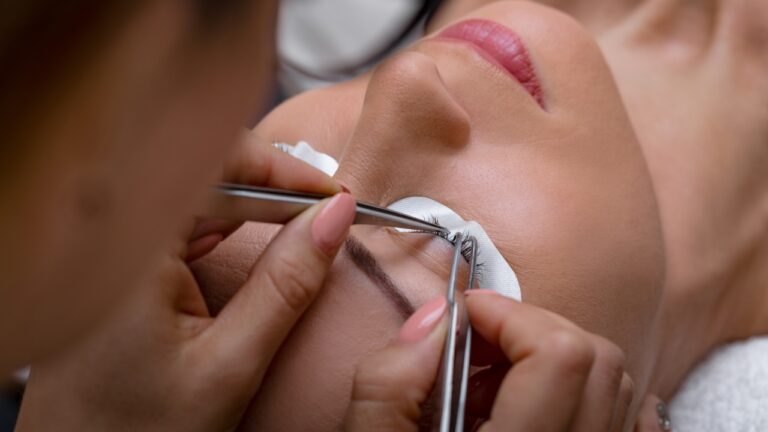25 Tips For SFX Makeup artists [2025]
Here are some helpful tips for those looking into being an SFX makeup artist or getting better at their SFX craft.
For those who dare to venture into the captivating world of special effects makeup, a realm where artistry meets illusion, there’s a unique blend of excitement and fascination.
Whether you aspire to work on film sets, theatrical productions, or immerse yourself in the creative sphere of SFX makeup as a personal passion. This article will help you with some tips you can do right away.

In this guide, we’ll share tips and tricks tailored specifically for SFX makeup artists.
These insights will help you take your craft to awe-inspiring levels. So, gather your tools, unleash your imagination, and prepare to enter the enchanting realm of special effects makeup artistry.
SFX makeup artist tips guide
1. Study Anatomy and Physiology
Studying anatomy and physiology is an indispensable cornerstone of becoming a skilled special effects makeup (SFX) artist.
This tip involves diving deep into the workings of the human body, encompassing both its structure (anatomy) and its functioning (physiology). Here’s why it’s important:
Understanding the Canvas:
As an SFX artist, your primary canvas is the human body. Knowing anatomy allows you to know the underlying framework that supports the skin, muscles, and various bodily systems.
Without this knowledge, it’s challenging to create convincing effects because you won’t know how these effects should interact with the body’s natural contours and features.
Realism and Authenticity:
One of the key goals in SFX makeup is achieving realism. Whether you’re creating wounds, aging effects, or transforming actors into fantastical creatures, a solid grasp of anatomy makes your creations adhere to the laws of biology.
Realistic effects are not only visually convincing but also emotionally impactful for the audience.
Proportion and Balance:
Understanding the proportional relationships between different parts of the body is super helpful. It enables you to create effects that maintain a sense of balance and believability.
For example, if you’re crafting a prosthetic nose for a character, knowing the proportions of a human nose will help fit on the actor’s face properly.

Functional Awareness:
Physiology knowledge goes hand in hand with anatomy. It’s not just about how things look but also how they work.
Familiarity with the body’s systems and functions can be vital, especially when you’re creating injuries or effects that involve bodily fluids.
Understanding how blood circulates, for instance, informs your approach to creating convincing blood effects.
Avoiding Pitfalls:
Lastly, knowing anatomy and physiology helps you avoid common mistakes and pitfalls.
It’s not uncommon for inexperienced artists to create effects that seem unnatural or unrealistic because they lack an understanding of how the body functions.
This knowledge acts as a safeguard against such errors.
To study anatomy and physiology effectively, consider enrolling in courses, attending workshops, or using educational resources like anatomy books, online courses, or even anatomical models.
Also, Amazon has several top selling anatomy books to help get you started.

Hands-on learning and the ability to visualize the human body in three dimensions are particularly beneficial for SFX artists.
Ultimately, your investment in understanding the human form will be reflected in the quality and authenticity of your special effects makeup creations.
2. Build a Strong Foundation
Building a strong foundation in traditional makeup techniques is a cornerstone for any aspiring special effects makeup (SFX) artist.
Traditional makeup skills provide SFX artists with a solid understanding of color theory, texture, and blending – all of which are indispensable when crafting realistic and visually compelling effects.

These skills help artists to create a seamless transition between their SFX work and the actor’s natural skin, so that the final result appears harmonious.
For example, understanding how to contour and highlight the face effectively can greatly enhance the illusion of depth and three-dimensionality in SFX creations.
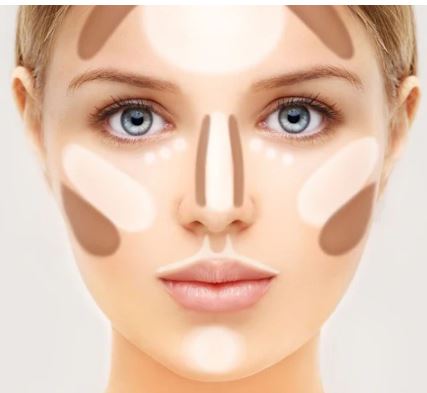
Additionally, proficiency in traditional makeup techniques gives SFX artists the ability to create a flawless base for their effects.
Building a strong foundation in traditional makeup is akin to acquiring the tools of the trade, setting the stage for SFX artists to embark on their creative journeys with confidence and competence.
To establish this foundational knowledge, aspiring SFX artists can enroll in makeup courses, workshops, or self-study with reputable makeup textbooks and tutorials.
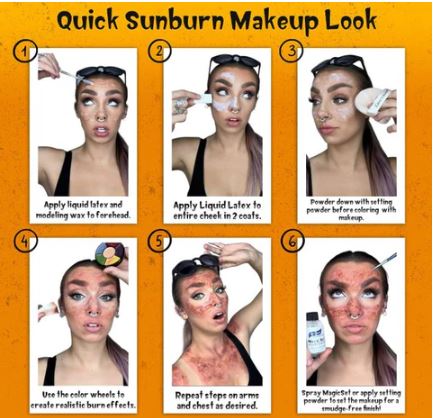
Practical experience and hands-on practice are vital components of this learning process. So take the time to practice the intricacies of human features, and develop an eye for detail.
3. Invest in Quality SFX Products
Investing in quality products is more than just a suggestion; it’s a must so that you have products that stay on and go on the skin properly.
Quality products are the lifeblood of SFX makeup, and they play a pivotal role in determining the final outcome of your creations.
Top-tier makeup brands and SFX suppliers have spent years perfecting their formulations. The make sure that their products possess the right texture, durability, and pigmentation to achieve professional results.
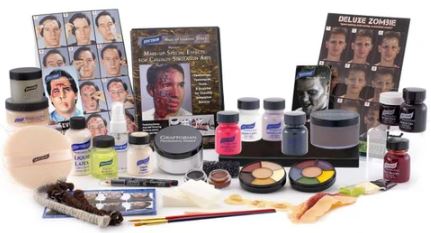
High-quality SFX makeup is specifically designed to withstand the demands of film and stage. Where long hours, heat, and extensive wear are common.
Inferior products may smudge, fade, or break down under these conditions, compromising the integrity of your work.
Quality SFX makeup products are typically rigorously tested to be hypoallergenic and safe for use on the skin.
They are less likely to cause irritation, allergic reactions, or other adverse effects. Inferior products may contain harmful substances or lack proper testing, putting your clients at risk.
By investing in reputable brands and trusted suppliers, you not only get the best possible results but also prioritize the health and safety of those you work with.

Investing in quality products also extends to tools and equipment. Brushes, sponges, and prosthetic materials should be of the highest quality for precision and durability.
4. Learn From Experts
One of the best tips for special effects makeup (SFX) artists is to seek guidance and learning opportunities from industry experts.
Learning from those who have already made their mark in the world of SFX offers a wealth of benefits that can significantly accelerate your growth and development in this field.
Experts often have a deep understanding of the nuances and intricacies of SFX makeup. They often have insider tips and tricks that can’t be found elsewhere.
Their mentorship can help you avoid common pitfalls and provide shortcuts to achieving professional-level results.

Secondly, learning from experts can open doors to networking and career opportunities.
Building a mentorship or learning relationship with an established SFX artist can introduce you to their network of industry professionals. This may lead to job referrals, collaborations, or exposure to relevant projects.
5. Master The Art Of Sculpting
Mastering the art of sculpting is a needed skill for any special effects makeup (SFX) artist. It forms the foundation for creating lifelike prosthetics and intricate details that bring characters and creatures to life.
Sculpting in SFX makeup involves the meticulous manipulation of various sculpting materials to craft custom molds, prosthetic pieces, and texture details.
The ability to mold and shape materials like clay, wax, or silicone allows you to create custom-designed prosthetics that fit seamlessly on an actor’s face or body.

The sculpting process also allows you to add fine details and textures, such as wrinkles, scales, or scars, which contribute to the character’s depth and realism.
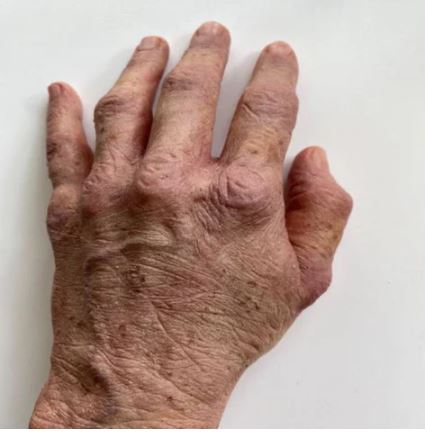
It also allows you to innovate and push the boundaries of your artistry, enabling you to explore new concepts and techniques in the ever-evolving world of SFX makeup.
In essence, mastering the art of sculpting is a cornerstone skill that empowers SFX artists to turn their imaginative visions into tangible, awe-inspiring creations on the human canvas.
6. Understand Color Theory
Knowing color theory is an aspect of becoming a skilled special effects makeup (SFX) artist.
Color theory is the foundation upon which SFX artists create convincing and visually striking effects. It plays a role in getting realism and storytelling within the context of a production.
For instance, if you’re crafting a bruise or wound, knowing which colors to use and how to blend them realistically can make the difference between a convincing injury and a lackluster result.

Additionally, color theory helps artists achieve accurate shading, highlights, and color transitions, ensuring that SFX makeup appears three-dimensional and fits seamlessly into the narrative of a production.
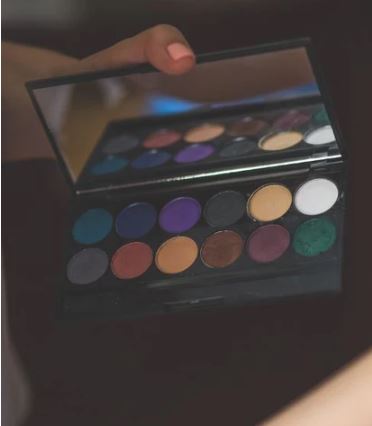
Knowing color theory in the realm of SFX makeup is a skill that will help you to bring characters to life with a palette of creative possibilities
7. Study Special Effects Makeup History
Learning the history of special effects makeup is a helpful step for any beginner SFX artist.
This historical perspective also serves as a wellspring of ideas and references. It will help with ideas to recreate iconic looks from classic films or adapt vintage techniques to modern projects.

8. Stay On Top Of Trends
Staying informed about current trends in the world of special effects makeup is not merely a suggestion; it’s a strategy for any aspiring SFX artist.
The field of SFX is dynamic, with trends evolving rapidly to meet the demands of changing storytelling techniques, technological advancements, and audience expectations.
By staying up-to-date with these trends, artists can remain relevant and competitive in the industry.
This involves regularly following industry blogs, magazines, and social media accounts of fellow artists and makeup companies.

Additionally, attending SFX makeup trade shows and conventions offers a firsthand opportunity to witness and learn from professionals.
9. SFX Makeup Room Safety
When working with a myriad of makeup products, prosthetic materials, adhesives, and chemicals, understanding safety protocols is a must.
Make sure you have proper ventilation in workspaces, using personal protective equipment (PPE) like gloves and goggles. Maintain meticulous hygiene practices.

SFX artists should also have a thorough knowledge of the potential risks associated with different materials. Be vigilant about allergies or adverse reactions that actors or models may experience.
Safety not only safeguards the physical well-being of everyone involved but also gives a professional and responsible approach to the craft.
10. Experiment with Texture
Experimenting with texture is a fun special effect and is often the key to creating realistic effects.
Texture is what adds depth & dimension to SFX makeup. As an SFX artist, you must explore various materials and techniques to replicate diverse textures.
These will range from smooth skin to rough scales, gruesome wounds, or aged wrinkles.
This experimentation involves working with an array of SFX materials, such as latex, gelatin, silicone, and even unconventional items like rice, oatmeal, or tissue paper.
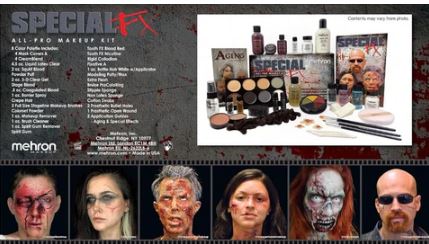
Experimentation also helps artists to tackle a wide range of projects with confidence.
From crafting ethereal fantasy creatures to designing gruesome horror effects, all while pushing the boundaries of what is possible in the world of SFX makeup.
11. Learn from Your Mistakes
Learning from your mistakes is a part of the journey for any special effects makeup (SFX) artist. In the realm of SFX, where experimentation is often at the forefront, errors and missteps are bound to occur.
However, these moments should be embraced as valuable learning opportunities rather than sources of discouragement.

When an SFX makeup doesn’t turn out as expected, it’s a chance to critically assess what went wrong. Whether it be a blending issue, color mismatch, or application technique, and understand why.
12. Master the Art of Aging
Mastering the art of aging is a good skill for special effects makeup (SFX) artists. Especially when tasked with creating realistic and convincing elderly characters or historical reenactments.
Aging makeup involves much more than simply adding wrinkles; it requires an in-depth understanding of the aging process.
Changes in skin texture and how various factors like sun exposure, genetics, and lifestyle impact the appearance of aged skin.
As an SFX artist, you should learn how features like the skin’s elasticity, pigmentation, and muscle structure transform with age.
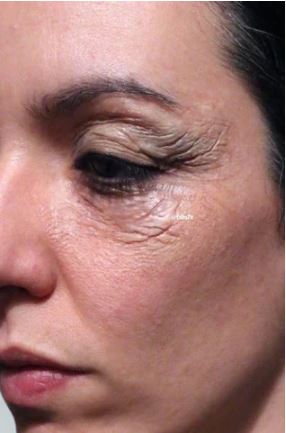
By mastering the art of aging, you enhance your portfolio, broaden your artistic range.
13. Create A Portfolio
Creating a portfolio is a step for any aspiring special effects makeup (SFX) artist, as it serves as a visual representation of your skills, creativity, and versatility.
To create an effective SFX makeup portfolio, curate a diverse selection of your best work.
This should encompass a variety of projects that showcase your ability to create different types of effects. From realistic injuries and character transformations to fantasy creatures and period-specific makeup.
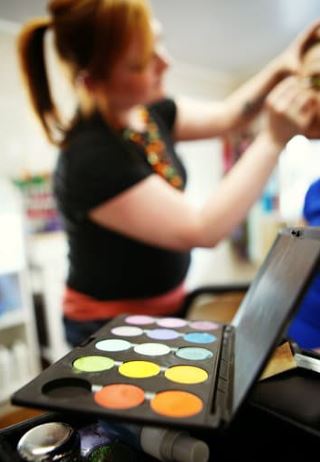
Including before-and-after photos or progress shots can provide valuable insights into your process and transformation abilities.
Additionally, consider including a brief description of each project, detailing the objectives, challenges, and techniques used.
Organizing your portfolio thoughtfully allows potential clients or employers to quickly grasp the depth of your talent and the versatility of your SFX skills.
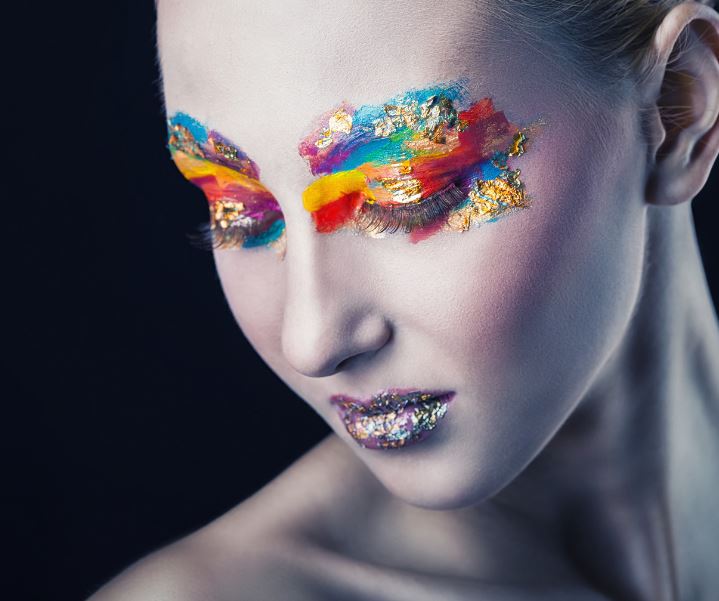
In today’s digital age, having an online portfolio is a must have. Create a professional website or utilize social media platforms to showcase your work. Regularly update your portfolio to reflect your latest projects and keep your skills current.
14. Develop a Time-Efficient Workflow
Developing a time-efficient workflow as a special effects makeup (SFX) artist is paramount for meeting demanding project schedules and delivering consistently high-quality results.
It involves planning and organization, beginning with a detailed assessment of the makeup requirements for each project.

Artists should also create checklists and schedules to keep themselves on track.
15. Specialize Early
Specializing early is a strategic choice that can set you on a path to success of special effects makeup (SFX).
Rather than spreading your focus thin across various SFX niches, this tip emphasizes the advantages of honing your skills and becoming an expert in a specific area of SFX makeup.
One of the primary benefits of specializing early is the ability to develop a niche expertise that distinguishes you from the competition.

Whether you choose to specialize in prosthetic creation, creature design, gore effects, or any other subfield within SFX, this focused approach allows you to delve deep into the intricacies of your chosen area.
By dedicating your time and effort to mastering a specific aspect of SFX makeup, you can become a sought-after specialist with a reputation for excellence in that particular niche.
16. Network Relentlessly
This tip underscores the significance of actively cultivating professional relationships, seeking collaborations, and connecting with industry peers.
Networking serves as a catalyst for growth and opportunity in the SFX makeup field.
By attending industry events, workshops, conventions, and joining relevant online forums or social media groups, you immerse yourself in a community of like-minded individuals who share your passion for SFX.

These connections can lead to many benefits, including job referrals and collaborations.
Furthermore, networking isn’t just about accumulating contacts but also about building genuine relationships.
In an industry where opportunities often arise through word of mouth and personal connections, relentless networking isn’t just a valuable strategy; it’s a vital component of long-term success as an SFX makeup artist.
17. Master Lifecasting
Mastering the art of lifecasting is a great skill for any special effects makeup (SFX) artist aiming to create custom prosthetics and lifelike effects.
Lifecasting is a cornerstone of SFX because it enables artists to create prosthetic appliances that fit seamlessly on an actor’s unique features.
A well-executed lifecast serves as the foundation for crafting custom prosthetics.

With the ability to create accurate molds of different body parts, artists can expand their range and tackle a wide variety of projects.
Whether it’s designing intricate facial prosthetics, crafting lifelike hands, or replicating other body parts for creature effects. Lifecasting provides the foundation for tailoring SFX makeup to the specific needs of each project.
18. Understand Budget Constraints
Understanding and managing budgets is a key skill for any special effects (SFX) makeup artist.
This tip shows how important it is to be aware of finances and manage resources well when creating SFX makeup for projects in film, TV, theater, or independent productions.
Budgets can be tight in the SFX industry. Not every project will have a lot of money for SFX makeup.
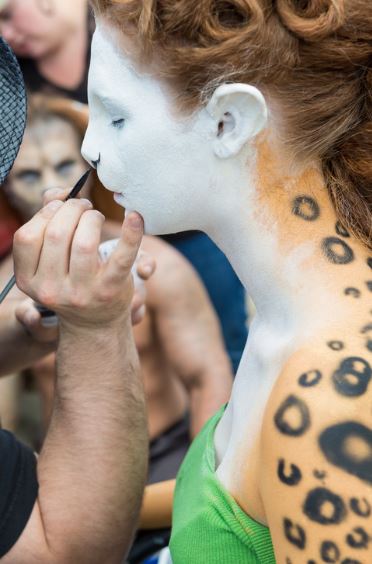
So, SFX artists need to work within the budget while still making great effects. This means being smart about choosing materials and finding creative ways to get the desired look without spending too much.
Good budget management keeps projects on track and shows producers and clients that you are professional and adaptable.
19. Collaboration is Key
Collaboration is a must for any special effects (SFX) makeup artist aiming for success in the world of film, TV, theater, and live events.
This tip highlights how important teamwork, communication, and working with others are to make a project come to life.

Collaboration brings together the talents of many people. In SFX makeup, artists often work closely with directors, costume designers, set designers, and cinematographers.
By working as a team, they can create amazing effects and ensure the project is a success.

Good communication and teamwork are key to making the director’s vision come true while meeting the needs and limits of the production.
20. Learn Digital SFX
Learning digital special effects (SFX) is a valuable skill for SFX artists in today’s tech-driven entertainment industry. This tip shows how important it is to use digital tools and techniques to stay relevant and competitive.
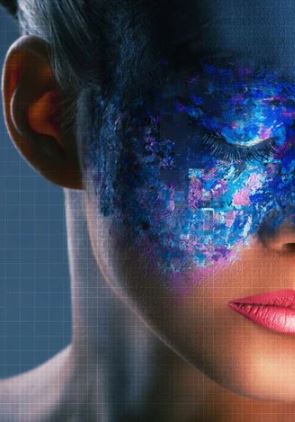
Digital SFX skills let artists use the latest technology to create amazing and immersive effects.
Advances in digital makeup and visual effects have changed the industry, allowing artists to achieve incredible realism and complexity.
Learning digital SFX helps artists mix practical and digital effects smoothly, giving them more creative options.
21. Study Film and Lighting
Studying film and lighting is important for becoming a skilled special effects (SFX) makeup artist.
It helps you understand how visual elements like lighting, cinematography, and camera techniques work with makeup effects on screen.
Knowing about film and lighting allows SFX artists to adjust their makeup designs for different productions.

Different lighting setups, camera angles, and film formats can change how makeup effects look on screen.
By learning about these elements, artists can adapt their techniques and materials to fit the needs of each project.
22. Work Well Under Pressure
The ability to work effectively under pressure is a vital skill for any special effects makeup (SFX) artist.
The SFX industry is known for its fast-paced and often unpredictable nature. Film shoots, theater performances, and live events frequently operate on stringent timelines, leaving little room for errors or delays.

SFX artists must adapt to these pressures by meticulously planning their workflow, staying organized, and managing their time efficiently.
Maintaining a calm and focused demeanor under pressure enables artists to meet deadlines while ensuring that the quality of their work remains consistent.
23. Experiment with Materials
By actively experimenting with different materials, artists can stay at the forefront of the field. Discovering fresh techniques and solutions to create fresh effects.
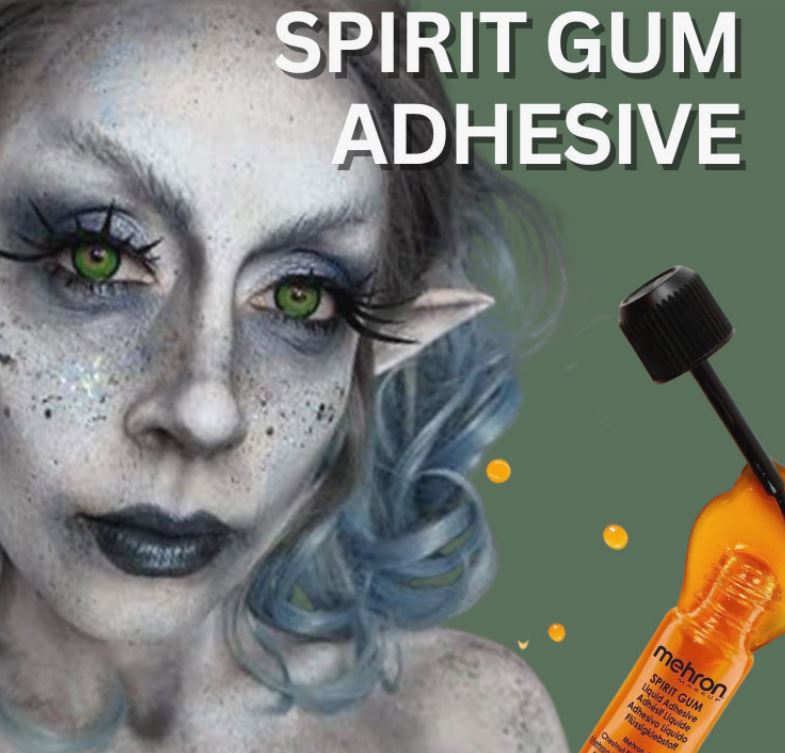
Whether it’s testing unconventional substances like silicone, gelatin, foam latex, or experimenting with everyday household items like powdered sugar.
24. Understand Script Analysis
Script analysis enables SFX artists to grasp the nuances of each character’s journey and physical transformation.
By immersing themselves in the script, artists can discern the emotional and psychological aspects of the characters they’ll be working on.
This understanding allows them to tailor makeup designs to suit the character’s arc and contribute to the storytelling process.

Whether it’s aging a character over time, creating wounds that reflect their journey, or designing fantastical creatures that align with the narrative, script analysis is the compass that guides makeup choices.
Script analysis is the key that unlocks the full potential of SFX makeup, elevating it from a cosmetic endeavor to a storytelling tool.
25. Develop Business Skills
Developing business skills is a must know aspect of succeeding as a special effects makeup (SFX) artist.
Artists who can communicate clearly with clients, secure fair compensation, and manage their finances are better equipped to thrive in the industry.
A Kindle is great for learning business because you can download as many business books as you like to keep on one device.
In Closing:
Thank you for taking the time to explore these valuable tips and tricks tailored for SFX makeup artists.

So, thank you for joining us on this creative adventure, and we wish you endless inspiration and success in your SFX makeup endeavors.
Next, check out these best selling SFX makeup kits.

